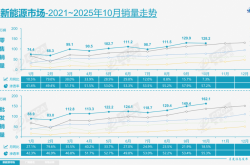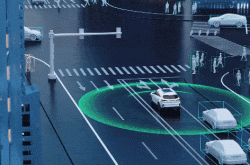Apple Bids Farewell to Mac Pro: Is It Ousted by the AI PC Era?
![]() 11/18 2025
11/18 2025
![]() 443
443
The Windows阵营 (Windows camp) is also undergoing a collective transformation.
The Mac Pro's journey has finally reached its conclusion.
According to Bloomberg's latest report by Mark Gurman, Apple has largely abandoned this product line. The planned M4 Ultra chip for the Mac Pro has been scrapped, and the development of the new Mac Pro has been put on hold. Internally, Apple even regards it as a 'low-priority' project.
Once a symbol of ultimate professional capability, the iconic tower workstation is quietly fading from Apple's core focus. However, this isn't a sudden shift but rather the culmination of long-term deliberation. Since its form factor update in 2019, the Mac Pro has struggled to carve out a new niche in the Apple Silicon era, clearly being eclipsed by the smaller, more integrated Mac Studio product line.
Yet, what truly matters isn't Apple's attitude towards the Mac Pro itself, but rather the broader industry trend it signifies: the traditional 'workstation' is undergoing a redefinition.
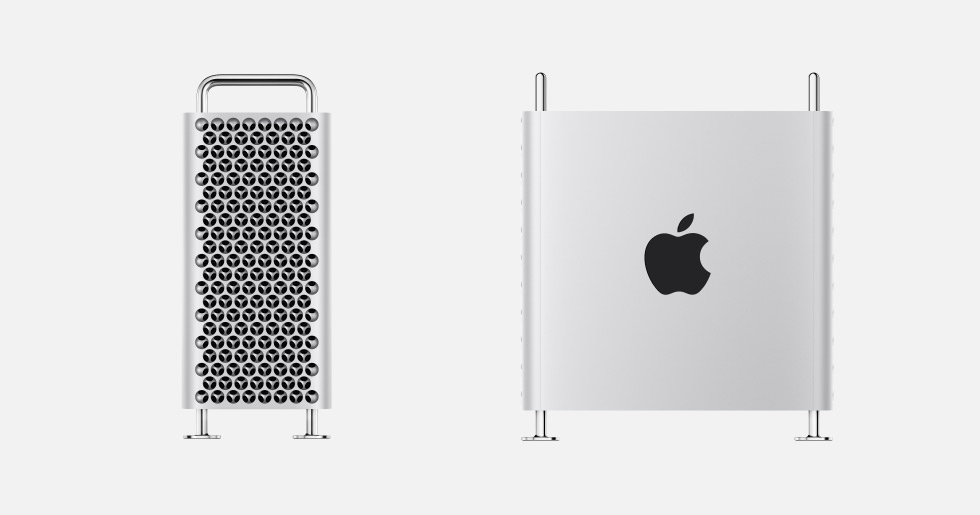
Mac Pro, Image Source: Apple
Especially when a System-on-Chip (SoC) becomes sufficiently powerful and versatile, the rationale for traditional tower PCs starts to weaken. In March of this year, Apple unveiled the latest Mac Studio models, equipped with M4 Max and M3 Ultra chips, capable of running large models with over 600 billion parameters locally (DeepSeek R1's maximum parameter count is 671 billion).
Meanwhile, this year's most radical transformation in the Windows PC industry also stems from highly integrated SoCs. AMD's Ryzen AI Max+ 395, introduced at CES 2025 earlier this year, serves as a prime example: boasting a 16-core Zen5 CPU, an RDNA3+ GPU comparable to mid-range discrete graphics, and a 50 TOPS NPU capable of running local small models, all integrated into a single chip.
In fact, this was also one of the key motivations behind NVIDIA's initial foray into PC chips. However, in September this year, NVIDIA 'opted' to collaborate with Intel. Besides Intel customizing x86 processors for NVIDIA in the data center sector, Intel will also introduce x86 SoCs integrating NVIDIA RTX GPU chiplets (Chiplet) for the personal computing market.
These developments are poised to reshape PCs and our perceptions of them.
Who is Responsible for the Mac Pro's Demise?
Rewinding to 2006, the Mac Pro's inception was a natural progression. That year, Apple fully transitioned to Intel architecture, and the Mac Pro, as the successor to the Power Mac G5, was defined as the 'pinnacle of professional Macs' – featuring more robust CPUs, greater expandability, and freer memory and graphics card slots, supporting high-end scenarios like film and television, design, 3D, and music production through a single tower workstation.
At that time, Apple indeed needed such a 'flagship' product to prove itself more than just an ordinary consumer electronics company.
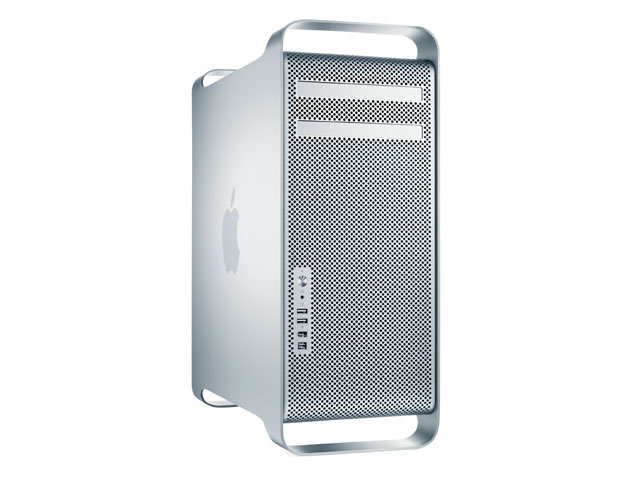
First-generation Mac Pro, Image Source: Apple
The Mac Pro reached its zenith in 2019. When Apple introduced the 'stainless steel cabinet'-style Mac Pro, professional users worldwide hailed it as a machine built without cost constraints. On the other hand, it also demonstrated Apple's willingness to invest resources in professional users. However, that marked the Mac Pro's most glorious moment and also the starting point of its decline.
The real turning point came after the advent of Apple Silicon. The three traditional selling points of tower workstations – ultimate performance, ultimate expandability, and ultimate configurability – were gradually dismantled on Apple Silicon.
Performance lies at the heart of the matter. The high energy efficiency design of M-series chips enables MacBook Pro and Mac Studio to deliver far greater productivity than Intel-era 'high-end towers' at similar price points. Apple itself acknowledges that when the same rendering, editing, and encoding workloads run faster on smaller, quieter, and more power-efficient machines, the 'performance rationale' for the Mac Pro becomes inadequate.
Expandability is an inevitable concern. Apple Silicon's unified memory, integrated GPU, and high-bandwidth on-chip interconnect inherently reject the traditional advantages of tower architectures.
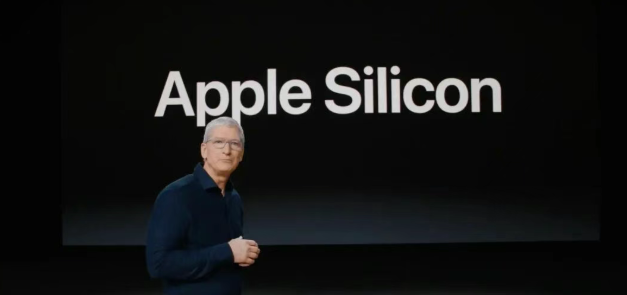
Image Source: Apple
Multiple PCIe slots, pluggable graphics cards, and upgradable memory modules were the distinguishing features of the 2019 Mac Pro within Apple's ecosystem. However, in the M-series design philosophy, most bandwidth is confined within the package. You cannot hot-plug a GPU to share the same high-bandwidth memory or stack computing power like traditional workstations, rendering the Mac Pro an 'anachronistic' existence in the M-chip era.
But what truly pushed the Mac Pro to the margins was the emergence of the Mac Studio. It almost seamlessly completed the 'migration' of Mac Pro users:
- Nearly equivalent performance (both featuring Ultra chips);
- Lower noise and higher energy efficiency;
- Peripheral expandability through Thunderbolt/USB4 sufficient for 90% of professional scenarios;
- And a price less than half of the Pro's (using the 2023 M2 Ultra models as an example).
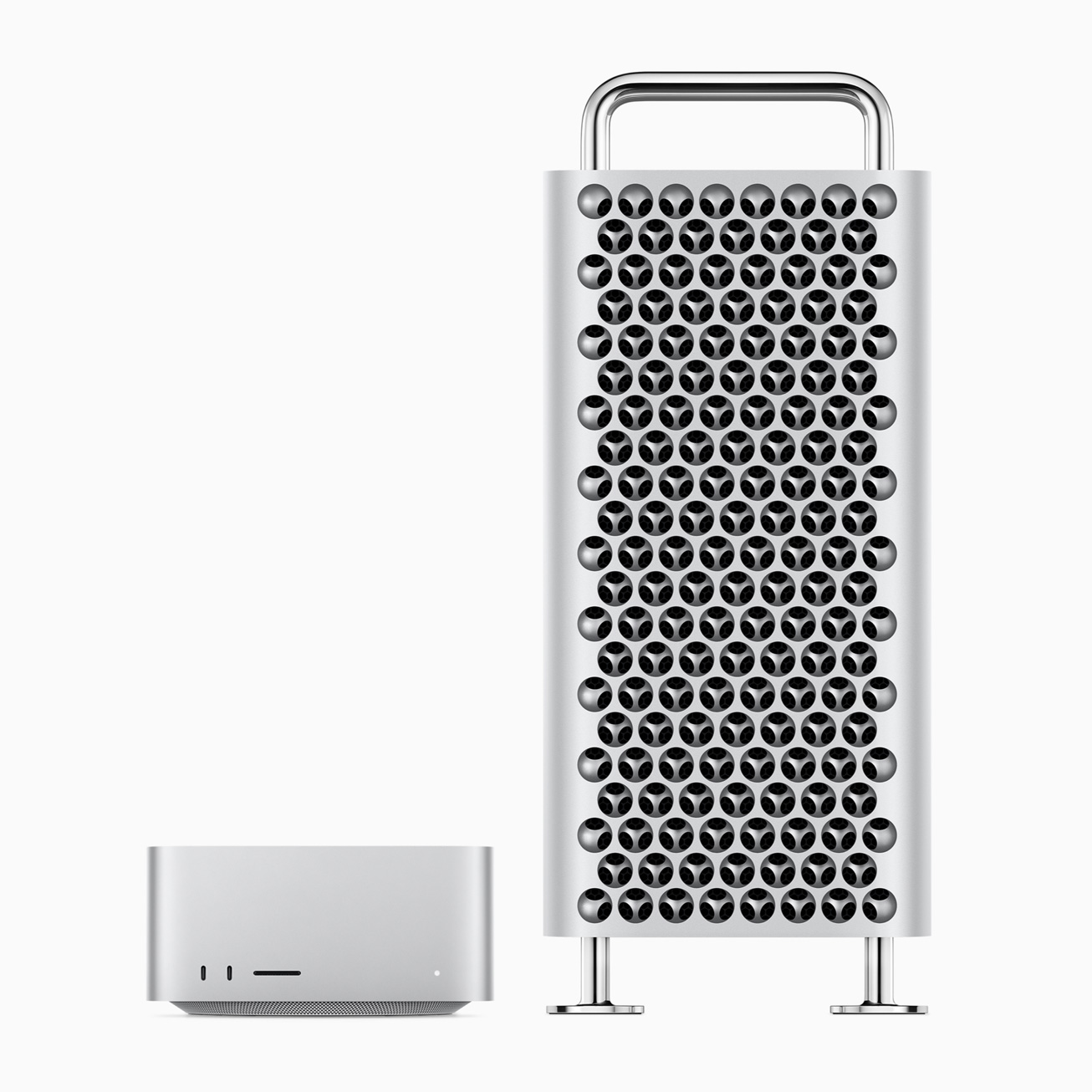
Mac Studio and Mac Pro, Image Source: Apple
Professional users' choices are straightforward: if a smaller, cheaper machine can accomplish the same tasks, why opt for the Mac Pro? This is the most direct reason for the Mac Pro's abandonment – its product positioning has been usurped by a sibling model, and even Apple recognizes that continuing to maintain this line no longer offers a reasonable return on investment.
However, a deeper reason lies in the fact that Apple Silicon's development direction has been clear from the outset: CPUs, GPUs, AI engines, and memory are all integrated within the package. Performance hinges on bandwidth, energy efficiency, and integration rather than the number of slots.
Coupled with the arrival of the AI era, where on-device inference has become a standard requirement across all platform devices, Apple naturally prioritizes resource allocation to MacBook, iPhone, iPad, and Vision Pro rather than tower workstations incapable of leveraging 'unified architecture advantages.'
In other words, the Mac Pro was not 'killed' by a single product but rather 'marginalized' by Apple Silicon's design philosophy and the mainstream computing architecture of the AI era.
The Windows Camp's Collective Transformation
If the Mac Pro's exit is a proactive decision by Apple, then the changes underway in the Windows camp resemble a collective industry transformation.
Over the past two years, the Windows ecosystem has maintained numerous traditional forms, such as tower workstations, DIY desktops, and mobile workstations, appearing calm on the surface. However, focusing on the AI wave of the past two years reveals that the entire PC industry is actually accelerating towards SoC integration.
This trend first emerged in ultrabooks. Intel's Lunar Lake, AMD's Ryzen AI 300 series, and Qualcomm's Snapdragon X series all directly boost NPU performance to the 40-50 TOPS level, even aggressively promoting SoC routes with memory soldered onto the package (though subsequently canceled in later products), sacrificing traditional upgradability for energy efficiency, bandwidth, and local AI inference capabilities.
This is not coincidental but rather the only reasonable choice made by the Windows camp in response to the deployment of AI large models. If PCs are to become true 'AI terminals,' computing power must concentrate within the package.

Ryzen AI 300, Image Source: AMD
This aligns with the direction of Apple Silicon, except that the Windows ecosystem lacks a unified architecture and must rely on chip manufacturers to drive bottom-up integration. Thus, we see that most seemingly 'normal updates' in AI PCs actually point to a common trend: replacing designs reliant on external GPUs and high-power supplies with stronger integrated computing power.
This year, the most 'Apple-like' development in the Windows camp might be x86's AMD. The Ryzen AI Max+ 395 (Strix Halo) represents an almost entirely new PC species: featuring a 16-core Zen5 CPU, an RDNA3+ GPU approaching mid-range discrete graphics, and a 50 TOPS XDNA2 NPU, enabling a laptop or mini PC to handle tasks previously requiring a 'tower desktop + discrete GPU.'
Essentially, the Ryzen AI Max+ 395 is a mobile workstation SoC, providing sufficient 3D, AI, and local large model inference capabilities within a compact form factor. Consequently, multiple manufacturers, including Lenovo, have launched newly designed compact PC hosts based on the Ryzen AI Max+ 395 this year.
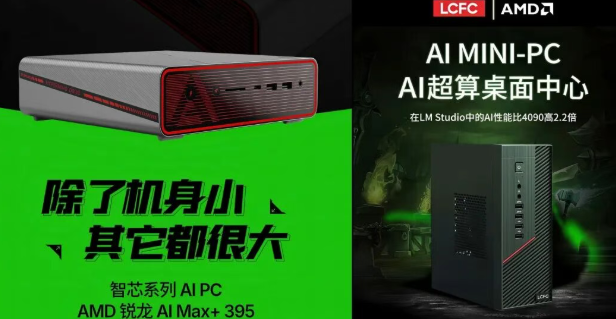
Image Source: Lenovo LCFC
This has created a de facto new stratification within the Windows camp. In scenarios like mid-range content creation, lightweight rendering, local model inference, and AI development, a laptop or mini PC equipped with a highly integrated SoC is often sufficient. In some cases, compactness even becomes an advantage.
Scenarios truly requiring tower desktops – large-scale 3D production, heavy simulation, ultra-high-resolution synthesis, HPC – are essentially migrating to the other end: cloud GPUs and distributed computing power. This further diminishes the necessity for high-performance tower hosts.
Of course, the Windows ecosystem's diversity makes it unlikely to abandon towers entirely like Apple. DIY desktops still offer tremendous flexibility in discrete graphics, storage, cooling, and power supply, while OEM workstations remain standard equipment in specific industries. However, within the overall PC market structure, these products may evolve into options reserved for a minority of enthusiasts.
Epilogue
When an industry shifts from 'external expansion' to 'chip-level integration,' and computing power consolidates from the motherboard into a single package, the Mac Pro's glory is destined to remain in the past. It did not lose to a single machine but to the direction the entire era is heading.
This is not merely Apple's choice but a consensus across the entire PC industry. Whether it's the unified memory of M-series chips or the highly integrated SoCs advanced by AMD, Intel, and Qualcomm in AI PCs, they all point to the same answer: future computing demands higher integration and collaborative efficiency.
From this perspective, the Mac Pro's exit may not mark an end but rather a new beginning.
Apple, AMD, NVIDIA, Qualcomm, AIPC
Source: Leitech
Images in this article are from the 123RF Licensed Image Library

